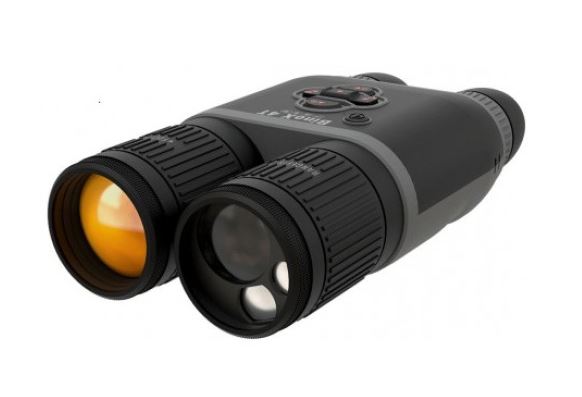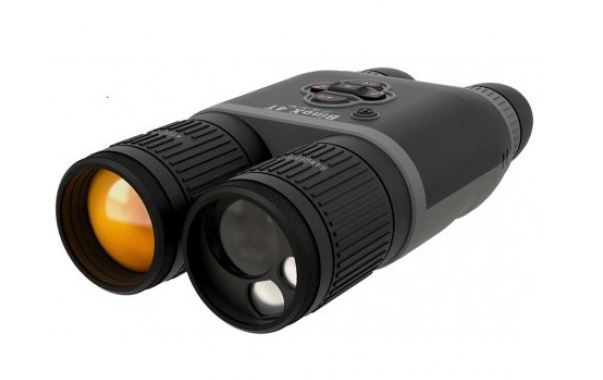Product: https://www.optics-trade.eu/en/docter-classic-1-5-6×42.html
This text is a transcription of the file in PDF format.

• Notice
Due to the high and intense focussing of light a direct observation of the sun with the
telescope may cause eye injuries and must by all means be avoided!
General information
DOCTER® classic 1-4×24, 1.5-6×42, 2.5-10×48 and 3-12×56
The DOCTER® classic rifle scopes represent outstanding hunting optics of latest design. With
their variable range of magnification, these rifle scopes offer diverse application possibilities
for all kinds of hunting and the most different lighting conditions. Their sturdy execution, high
optical performance, attractive finish and absolute operational reliability, even under extreme
weather conditions, will make your rifle scope indispensable to you.
Due to their uniform appearance and technical equipment, the similar models offer the
following conception:
• light metal tubes with or without mounting rails
• vertical and lateral adjustment of graticule and centred graticule/vertical and lateral
click stop adjustment
• eye defect compensation
• excellent recoil-proofness
• waterproof and dustproof
• continuously and silently adjustable magnification
Technical data DOCTER® classic

The DOCTER® classic 1-4×24 is a high-performance rifle scope, particularly suitable for
battue or big game hunting.
The DOCTER® classic 1.5-6×42 is designed as ”universal rifle scope“ for all hunting
conditions: suitable for battue and stalking as well as the raised hide.
The DOCTER® classic 2.5-10×48 unites the advantages of an instrument with high
magnification and high light transmission with those of a compact model.
The DOCTER® classic 3-12×56 has been developed particularly for the critical twilight period
and the raised hide at night. Here its 12fold magnification and its large aperture of the lens
prove their worth. You can still see a clear image with the DOCTER® classic 3-12×56 when
other hunting optics no longer offer any operational reliability.
Mounting
The two different basic models of these DOCTER®
classic rifle scopes allow diverse kinds of
mounting on your gun. For hook mounting the models with prism-rail (1) are suitable.
Rifle scopes without rail are appropriate for slip on-, hinge-or swivel mountings where the
tube is retained by clamping rings. It will be most expedient to have your gunsmith procure
and/or carry out the mounting that suits your particular needs.
Zeroing / Adjustment of graticule
The optical system of the rifle scopes is ex factory aligned to a distance of 100 m without
parallax. The rifle scope is mounted on the rifle and in general tested by your gunsmith by
shooting at a mark at a distance of 100 m. Moreover, our rifle scopes give the experienced
marksman the possibility of correcting the hit point position according to the respective
hunting conditions or kind of ammunition by means of their double adjustment of the graticule
(vertical (3) and lateral (4) adjustment).
To adjust the graticule, the two protecting caps (5) are unscrewed from the domes of the
graticule adjustment. When turning the handle elements underneath (6), the hit point position
is changed vertically on the upper dome (3) and laterally on the right-hand dome (4).
Vertical adjustment (H)
By turning the handle element in the direction of the arrow, the hit point position is shifted
upwards.
Lateral adjustment (R)
By turning the handle element in the direction of the arrow, the hit point position is shifted to
the right.
The defined notches of the click-stop adjustment as well as the graduated disks for retrieving
the zero point make an accurately reproducible correction of the hit point position possible.
One notch on the handle element corresponds:
for the DOCTER®
classic 1-4 x 24 to 2 cm at a distance of 100 m
for the DOCTER®
classic 1.5-6 x 42 to 1 cm at a distance of 100 m
for the DOCTER®
classic 2.5-10 x 48 to 1 cm at a distance of 100 m
for the DOCTER®
classic 3-12 x 56 to 1 cm at a distance of 100 m
10
The following total adjustment ranges for vertical and lateral adjustment at a distance of
100 m are guaranteed.
DOCTER®
classic 1-4 x 24 320 cm
DOCTER®
classic 1.5-6 x 42 210 cm
DOCTER®
classic 2.5-10 x 48 125 cm
DOCTER®
classic 3-12 x 56 100 cm
The end of the adjustment range can be sensed by stoppers. Please note that the graticule
remains in the centre of the image and the adjustments effect a displacement of the image
detail. The graticule adjustment is sturdy and recoil-proof. In order to avoid an accidental
adjustment of the graticule and to guarantee water-proofness, the protecting caps must
always be screwed onto both domes again. In doing so you must always pay attention to the
exact position of the seal rings (7).
The special design of the reversal system allows for optical compensation for graticule
displacement in the telescopic image (centred graticule).
The graticule thus always appears in the centre of the field of view, even after subsequent
correction of the hit point position. The zero setting is reproducible by means of the marking
on the graduated disk.
Attention:
To provide for a fast retrieval of the graticule’s zero position when using different ammunition
or fillings, the graduated disk (10) can be turned such after loosening the cross-drive screw
(9) that both index marks (11) face each other.
The adjustment range for correcting the hit point is sufficiently dimensioned. Should, however
the graduation not suffice, we recommend you have your rifle with the rifle scope checked by
your gunsmith.
Setting the visual acuity
The visual acuity is adjusted by turning the outer knurled ring (2) on the eyepiece. A
markman‘s possible eye defect is then compensated when graticule and target image stand
out sharply. Eye defect compensation of ±2.5 dioptres is possible.
For variable rifle scopes, setting the visual acuity should principally be carried out at the
highest magnification since thus the visual acuity can best be judged because of the
maximum resolution. The subsequent magnification change will not change the visual acuity
setting.
Change of magnification
Depending on the optimum firing range, lighting conditions and the kind of hunting, the
appropriate magnification can be easily changed by turning the inner knurled ring on the
eyepiece (8).
To improve orientation, the most important magnification values are engraved into the
knurled ring.
However, it is also possible to set any intermediate magnification at unchanged image
quality, visual acuity and hit point position.
Option: Rifle scopes with illuminated graticule
All control and functional elements of the graticule illumination system except the graticule
itself are placed in a third dome on the centre tube of the rifle scope, similar to the vertical
and lateral adjustment. The power supply is provided by a lithium battery CR2032.
Using the rotary controller (12) the graticule illumination system is turned on or off and the
luminous intensity can be adjusted according to the brightness outdoors and to the individual
requirements of the marksman.
The graticule illumination system is turned off when the point marking (14) on the rotary
controller faces the one on the centre tube (13). To replace the lithium battery, the cover of
the rotary controller has to be unscrewed by turning it to the left. The lithium battery situated
under the cover (15) can now be replaced. Then the cover can be screwed together again
with the rotary controller (12).
Accessories
To protect the outer parts of the instrument, interconnected protecting caps are delivered.
As a protection against lateral light, a telescopic rubber shade can be delivered on request,
which simultaneously guarantees the correct eye distance to the eyepiece and absorbs a
possible recoil.
Maintenance
When carefully operated, DOCTER® classic rifle scopes have a virtually unlimited life.
Before cleaning, the outer lens surfaces should be freed from dust (by means of a lens brush
or air bulb). This way, dirt particles and dust are prevented from being rubbed into the
blooming coat and damaging it. Abstain from using chemical solvents for cleaning the outer
lens surfaces!
In case of possible damage causing malfunction, the instrument must be sent to an
authorized repair shop.





